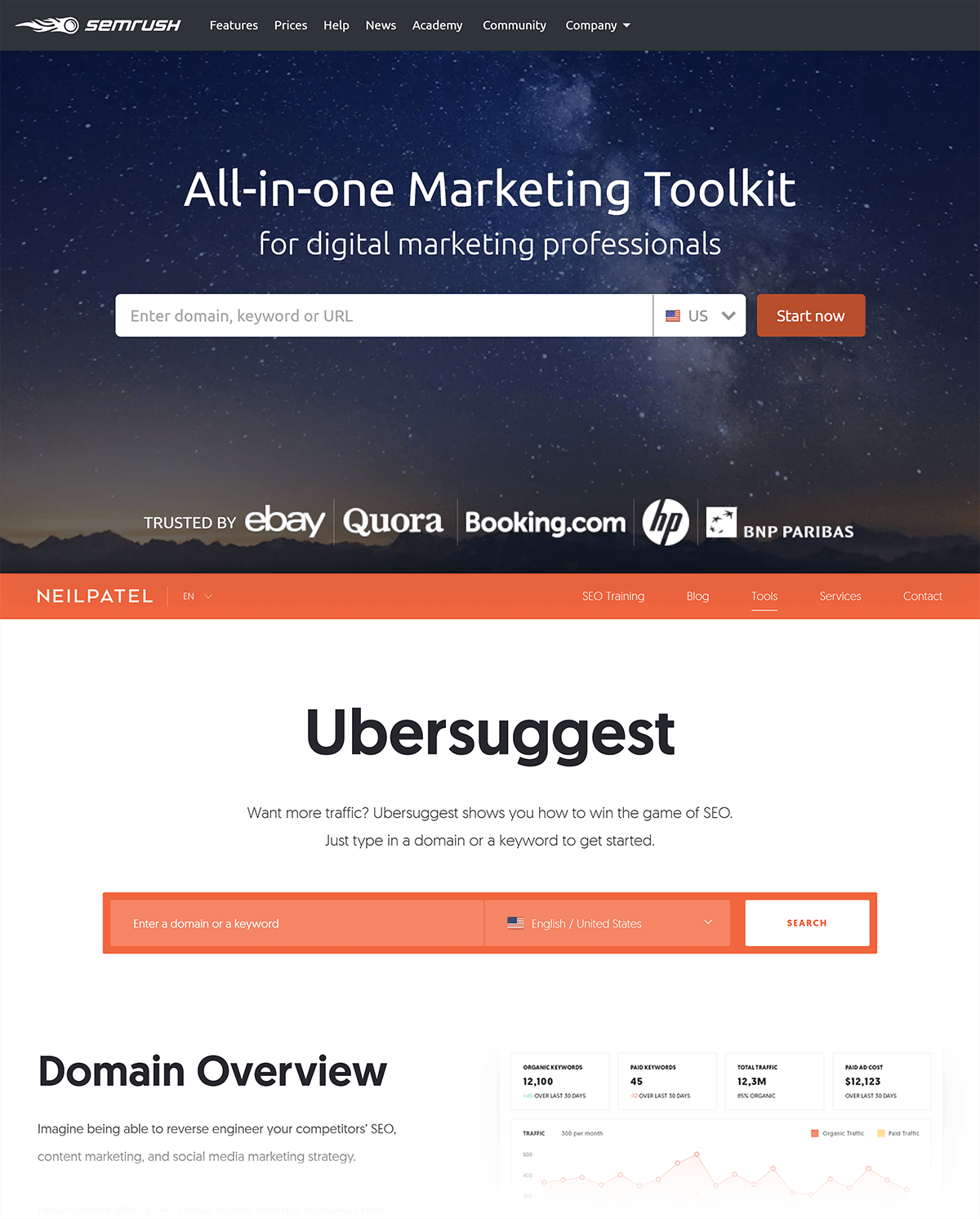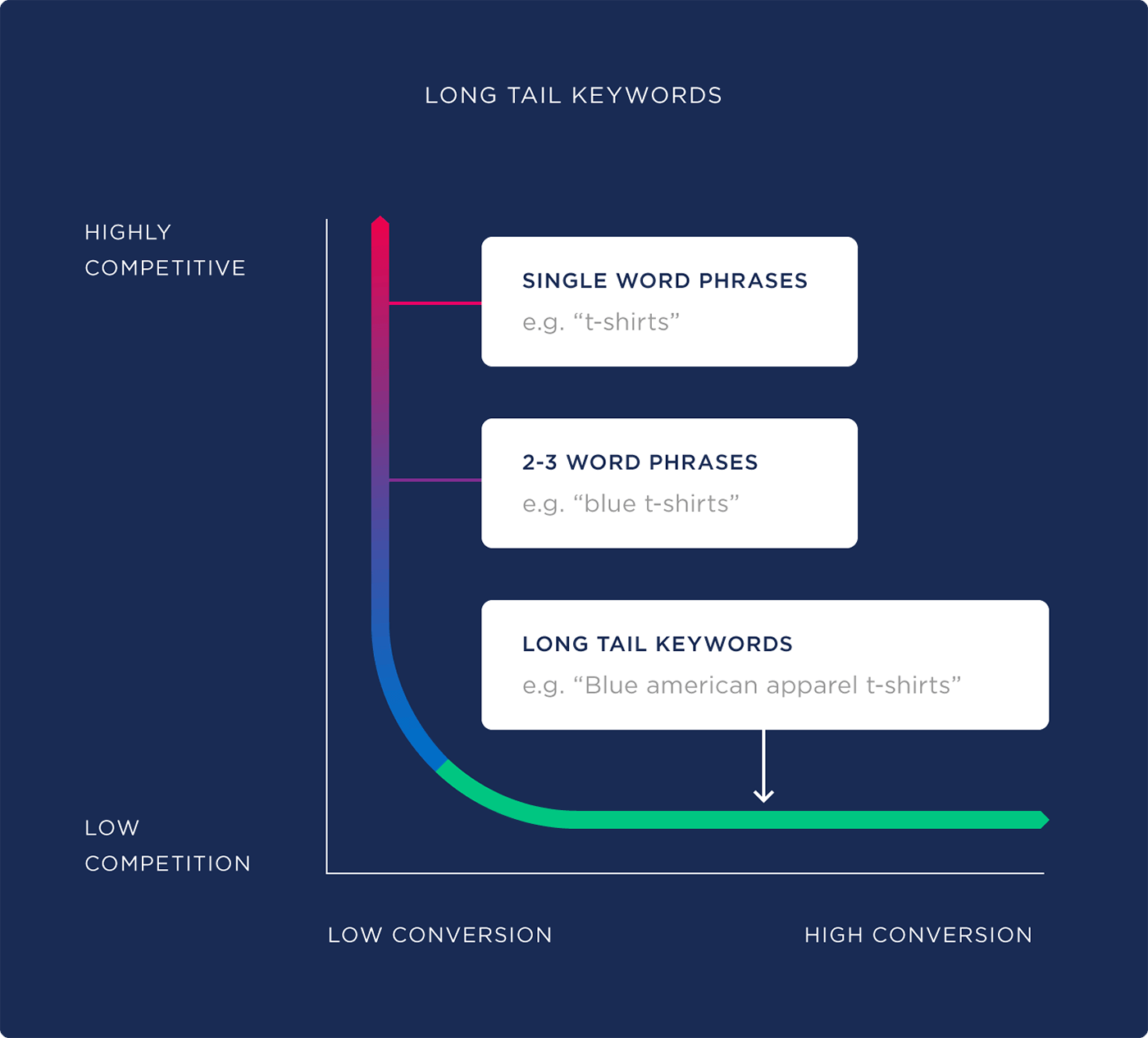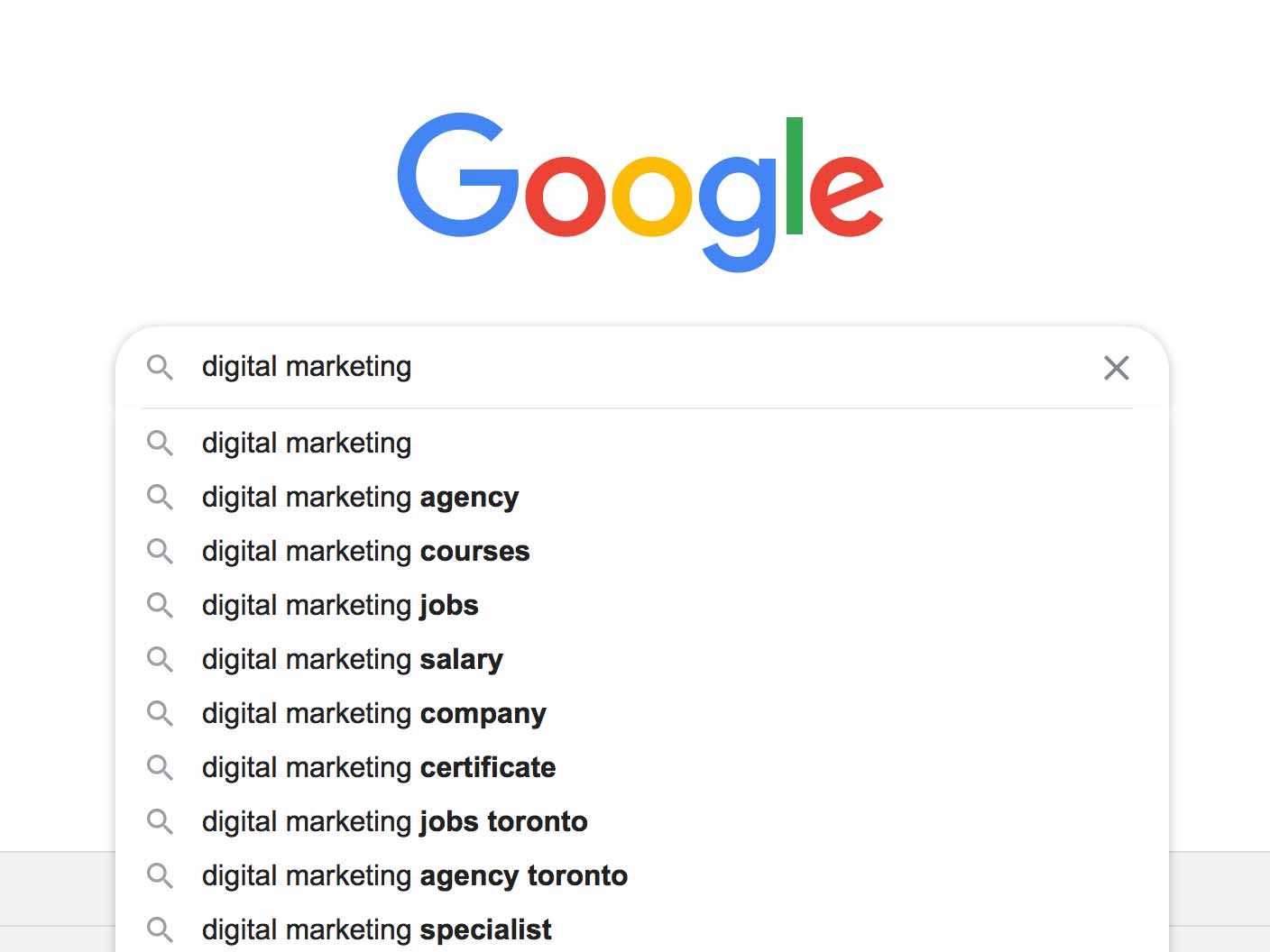February 2, 2021 - Brittany Garlin
How to Create an Effective SEO Strategy in 2021
This quick guide is your hack to creating an effective SEO (Search Engine Optimization) strategy for 2021. When we talk about SEO planning, we mean ensuring your website and its content shows up in all relevant search results throughout the coming year.
Your business should not suffer because of an incorrectly done SEO strategy. Most great companies lose out on potential customers because of poor SEO implementation.
The key to an excellent SEO strategy is understanding the difference between analytics, tactics, and SERP (Search Engine Results Page). Tactics help you plan and implement the way forward – devising tips, tricks, and hacks. Analytics help you measure the strategy’s success, and SERP helps with the search result standing that your online content or website has at any given point.
SEO strategy often gets confused with the planning of content and media marketing. SEO strategy has different needs than those of marketing plans. While SEO is a part of marketing, the timeframes, budgets, and resources needed are extra.
If you’re looking for higher search engine rankings and hope to attract potential customers and clients online, this SEO strategy guide is for you.
What is SEO?
SEO (Search Engine Optimization) is the process that helps increase the ranking of web pages and content on SERPs. This process is done with the help of optimized keywords and related content.
SEO Strategy is the process of developing and implementing a plan that enhances your SEO aims and goals to produce higher rankings in search results.
How to Build an SEO Strategy
Most businesses prefer outsourcing this to SEO agencies that specialize in helping all the website and related content rank higher on SERPs. These strategies are made keeping in mind the quarterly, bi-annual, and annual goals of the business.
As with any plan, it is best to have a precise aim and process in mind. This bit is where the strategy comes in. Following specific steps that ensure you’re on the right track can help cover all the focus areas and pain points in your SEO strategy for 2021. With the coronavirus pandemic, lots of businesses are struggling to regain their share of the market. A robust and focused SEO strategy can help with this aim.
Conduct an SEO Audit
If you haven’t made an SEO strategy previously, you should evaluate the content, wording, and target audience before you begin. But if you’ve implemented a system earlier, revising and conducting a site-wide audit should be the first step.
Successful SEO stems from the knowledge of what to do differently to get better results than before. Audits provide the marketing, content, and strategy teams with an initial or primary point before you start. A baseline helps in comparing metrics and analytics for the future and for providing a set metric.
Outsource the Audit
Outsourcing the audit helps provide fresh eyes to the site. If you or your team are helping with the SEO and marketing on the site all the time, you may miss out on crucial points that will not be obvious. A fresh set of eyes and an outside-in perspective will help with several critical SEO factors and observations.
Professional SEO audit experts can evaluate your website and its content, discover any prevalent issues, and then provide solutions or recommendations for the future. Some professional SEO experts also offer additional services for a fee.
In-house Audit
In-house audits are inexpensive, and most businesses expect their marketing teams to conduct regular SEO audits. While this may seem like a foolproof plan, it is more time consuming than outsourcing since you would need to keep evaluating each aspect with extra critical eyes.
If you or your team are new to SEO, you may miss out on all the benefits associated with a sound, professional SEO plan for the future.
Keywords Research and Lists
SEO entirely depends on relevant keywords. Keywords are the words used by readers, potential customers, and clients to search for a product or service. With the input of relevant keywords into search bars, search engines pull up websites and other content related to the search.
An SEO campaign that does not employ a lengthy, relevant, and diverse keywords list will not be successful in the long term.
There are many ways to do this:
- Manually type in the keywords to see the list of sites and content
- Using a keyword research tool
- Employing a professional to conduct the research
If you want to check out the search volume and competition levels for those terms, you can use a keyword tool like SEMrush or Ubersuggest.

While carrying out keyword research, you should pay close attention to how competitive the results are and the conversion rate. Short tail keywords are easy to type and remember, while some industries may require a long tail keyword instead. You should always be prepared to use both types of keywords for excellent results.

Ideally, use Google for keyword search since most of the keywords are Google-optimized for ease of use. Before moving on to the next step, you should have identified at least 10 – 15 highly competitive keywords with high conversion rates, with a mix of 5 – 10 low competition and high conversion rate keywords. Avoid using keywords with low competition and low conversion rates.
Analyze Google’s 1st Search Page
Once you have a list of the relevant keywords, input them one by one in the Google search bar. Nearly 95% of Google searches are done on mobile phones, with Google getting a massive chunk of the SERP pie. To research keywords, you should only type in the first word and check the results that follow. Scan all the results, and make a note of any patterns that may pop up.

Always check the results that the initial scan brings up. Some popular trends are list articles or listicles. Adding a quantitative number to the article, blog, or subject matter helps readers and viewers get a definitive idea of the page’s length. If you see a pattern or a repetitive trend, you should consider implementing a similar design to get results on your page too.
Publishing regular posts, blogs, articles, or videos relevant to the searches that rank on the first page gets better viewership for your site.
Analyze your Competitors’ SEO Strategy
We cannot stress how important this task is – analyze your competitor! Always check your competitors’ ranking on Google and other SERPs. It is necessary to understand their market standing and understand the difference in your SEO strategy with theirs.
Compile a list of all your competitors (even large businesses with a massive online presence). Conduct research of all the companies that have an overlap of keywords with the ones you have chosen.
Professional SEO analysts will successfully identify the type of content that is ranking excessively high on competitor pages. Products, services, blog posts, videos, and other shareable content can also be assessed using SEO analytics.
Once you know the type of content, you can check for the keywords ranking high for your competitors and implement those in your SEO tools. Professional analysts can also help rank your website with a few others to check the individual standing and assess the keywords’ gaps.
Using a backlink tool, it is possible to pinpoint where the maximum traffic is coming from and which keywords are operating at full potential.
Maximize Page Speed
Most content-heavy sites get slow and sluggish after a while. The excessive population of the website with multiple features can slow the entire site. Page speed analysis will help improve the loading technique for written content, embedded videos, and images.
Coding specialists can help recrawl the page with supplemental code in an asynchronous manner to load quicker. Doing this helps enhance the experience of clients and customers by loading larger page elements quickly.
Mobile sites, iPad and notebook sites, and large screen sites should be optimized for maximum page speed to ensure clients and customers do not leave the site before the content loads.
Research your Target Audience
Most businesses develop an SEO strategy based on their competitor trends and market reach. While this is useful, you should also research buyer behavior and patterns. Knowing your target audience helps you refine the SEO strategy to ensure you get maximum clicks to your website and content. Understanding how your target audience interacts online is crucial to finalizing your keywords and annual plan.
You should make relevant content for your target audience in a way that benefits them and makes you a preferred seller. Nearly 90% of marketers ensure that they cater to audience information needs. There are several ways that you can research your audience. Some of these methods are:
- Sales team member referrals and discussions
- Industry forums
- Social media
- Online surveys
- Customer support feedback
Once you get an in-depth understanding of why customers need your product or service, you can serve them better by providing everything they need. If future customers realize that you have everything they need, you will soon build a base of loyal customers and clients. Creating shareable content that speaks to them will help make your brand and improve your bottom line.
Set Quantitative Goals and KPIs
Setting quantitative goals and indicators is probably the most crucial part of an SEO strategy. A plan of action is measurable only when the goals and KPIs (Key Performance Indicators) can be assessed. Quantitative data helps track and measure the success or failure of your plan. Having a definitive goal in mind regarding target audience, potential clients, and measurable units and results is what will make your SEO strategy perfect.
Always leave enough room in your KPIs and goals to ensure any market volatility changes are covered. Having set goals also helps compare your starting point with your aim.
Giving set milestones to team members and clients to compare progress also helps ensure that everyone stays on the same page with the strategy and market outreach. Organic impressions, organic and inorganic footfall to your site, viewership, pay per click, CTR (Click Through Rate) rankings, and other avenues of tracking data should be readily available at your fingertips for the future.
Plan Keywords Placement
Most businesses make excellent keywords with their SEO strategy team but fail to implement them properly. Keywords are only useful if they can draw potential customers to the site. Make a plan on how, when, and where to use the keywords successfully. Using the keywords in the title and the metadata tags will help boost your content quickly.
Search engines like Google rank articles with usable keywords higher than those that are vague or unsure. Be extremely vigilant about the keywords’ placement in the title, metadata, and the content’s body. Remember to feature the keyword and its variations organically throughout the article or infographic. Stuffing articles with keywords is not useful as this only helps manipulate the rankings without adding any value.
If you plan to use SEO backlinking, helpful articles, and informative blogs to drive traffic to your website, your selected keyword should feature once or twice in one thousand words. If you have multiple keywords, ensure you have a more extensive article (useful content-heavy article) or a subject-specific article that helps potential and returning customers.
Optimize Images and Snippets to Drive Traffic
Once the research is done and keywords are finalized, you should optimize your blogs with relevant images (with keywords as details in the Alternative text box) while uploading. Most web developers and WordPress Logins allow for Alt text to help optimize images before upload.
Optimizing your featured content with snippets in the form of video, title, lists, and tables will also increase traffic to the website and increase Google ranking. Featured snippets are usually seen in boxes in search criteria that aid people in clicking the links faster than average. Using these tools to help maximize your content is sure to drive up traffic with structured SEO.
Content Hierarchy
Ensure that your website can be easily navigated. Structuring your content with headings, subheadings, metadata, and shareable links will ensure your readers are not lost on the site. Having individual tabs for different sections or subsections will show Google Rankings that your page is relevant and well-thought-out. You should also submit a Sitemap to Google Search Console to ensure that your site ranks higher quickly.
SEO strategy is only useful if the website is easy to navigate. A crudely constructed site that has no clear direction will not help get returning customers. If clients and customers cannot navigate appropriately to relatable content, they will not revisit your content, and instead, will choose another site even if they have less helpful information. Improving the user experience of the website will help in a substantial increase in organic monthly traffic.
High-Quality Backlinks and Link Building Strategy
Backlinks act as votes of authority for content-heavy sites. Since Google has trillions of webpages, verifying the site with thought leaders and high-quality domains can be tricky. Having good quality backlinks will help increase the quality of content and ensure your site easily ranks.
Some of the ways you can get quality backlinks are:
- Guest posts
- Link reclamation
- Unlinked brand mentions
- Community sites
- Paid promotions
- Content refreshing and repurposing
Link building strategy is a necessity to create an emphasis on building quality content. End users will not visit the website without excellent link building. Once all the content is linkable, you should reach out to influencers and leaders to help with organic marketing.
Create Great Content
The critical aspect of bringing it all together is to make your content look fabulous. Even if you have a lot of content like articles and blogs, make it look shareable, attractive, and outstanding. No one likes to see pages and pages of content, no matter how exciting the actual words may be in reality. Using different font sizes, colors, fonts, text boxes, images, and infographics help break the monotony of straightforward passages that may put your readers to sleep.
Always ensure your content is easy to digest and provides real value to the readers. Graphs, charts, titles that start with a definitive number of things to read, metadata that is easy to follow, and colorful or thought-provoking images help bring the website’s content together. If you feature statistics on the page, ensure all the relevant details are put forth in a simple yet well thought out manner. Once done, you should optimize everything for mobile sites that can be opened with short links on smartphones. Using charts and graphs in blog posts also increases your leadership standing in the market.
Final Thoughts
So here you have it – the best way to create an Effective SEO Strategy in 2021. Always remember to compare your results as you move forward.
Which strategy did you like best? If you have any feedback, we would love to hear from you!
Grow with the #1 marketing agency network and top destination for businesses to hire
Sign up for Agency Vista, and see why over 50,593 marketing agencies trust us to grow their online presence and foster credible relationships with businesses. We’re free forever, and you can upgrade, downgrade, or cancel any time.
Get Started
Get started free
Setup in minutes
No credit card required

Agency Vista is the new way for brands to find and easily connect with marketing agencies. Explore 50,593 verified profiles and reviews to find the right agency for your business.
Copyright © 2025 Agency Vista LLC. All rights reserved. Lovingly made in NYC.